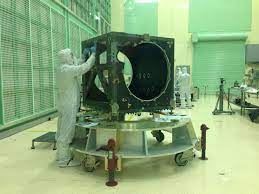Glenn Jackson, LCRD payload project manager, says the demo could someday help wrap internet networks around the moon and even Mars. “Currently we use radio frequency to move data and video to Earth,” Jackson says. “Laser communication increases that bandwidth and allows us to get more data to Earth from astronauts and science missions.”
Laser communications, also referred to as optical communications, use light to transmit information. The technology already exists on Earth in everyday items like TV remotes and heat lamps, but is typically used on a much smaller scale than what NASA plans to build while exploring the solar system.
For decades, astronauts and engineers relied solely on radio waves, or electromagnetic frequencies, to send messages back and forth between spacecraft and Earth. But because radio signals travel at the speed of light, like light, they diffuse at great distances.
This diffusion can cause delays in transmission, and could jeopardize a mission if scientists are unable to reach a spacecraft quick enough to help it out of a sticky situation. One of the most famous instances of a communications mishap occurred in 2020, when Deep Space Station 43—the only radio antenna on Earth that could communicate with NASA’s longest running space mission, Voyager 2—was shut down for maintenance. The agency immediately lost the ability to send commands to the veteran spacecraft, until it was able to reestablish contact almost a year later.
To avoid this kind of catastrophe and speed up space communications, the agency’s latest demonstration plans to use infrared lasers to send information back down to Earth. Unlike radio waves, lasers generate a very tight beam of light, which means they can travel vast distances without being affected by diffusion. These beams are also invisible unless they’re shot directly into the eye, because in space, there’s nothing for them to bounce off of.
By using a shorter wavelength of energy than radio waves, laser communications will allow scientists to send as much as 10 to 100 times more data than conventional radio systems do today. But how does it work?
Onboard, LCRD has powerful high-speed electronics that help control its performance, as well as two optical modules, or telescopes, that each have their own purpose. One telescope receives data from user spacecraft, while the other transmits data back to the ground. According to NASA, while it takes about nine weeks for radio systems aboard a current spacecraft to transmit a complete map of Mars, laser technology could cut that time into nine days.
Source : https://www.popsci.com/space/nasa-launch-laser-communications-space/









